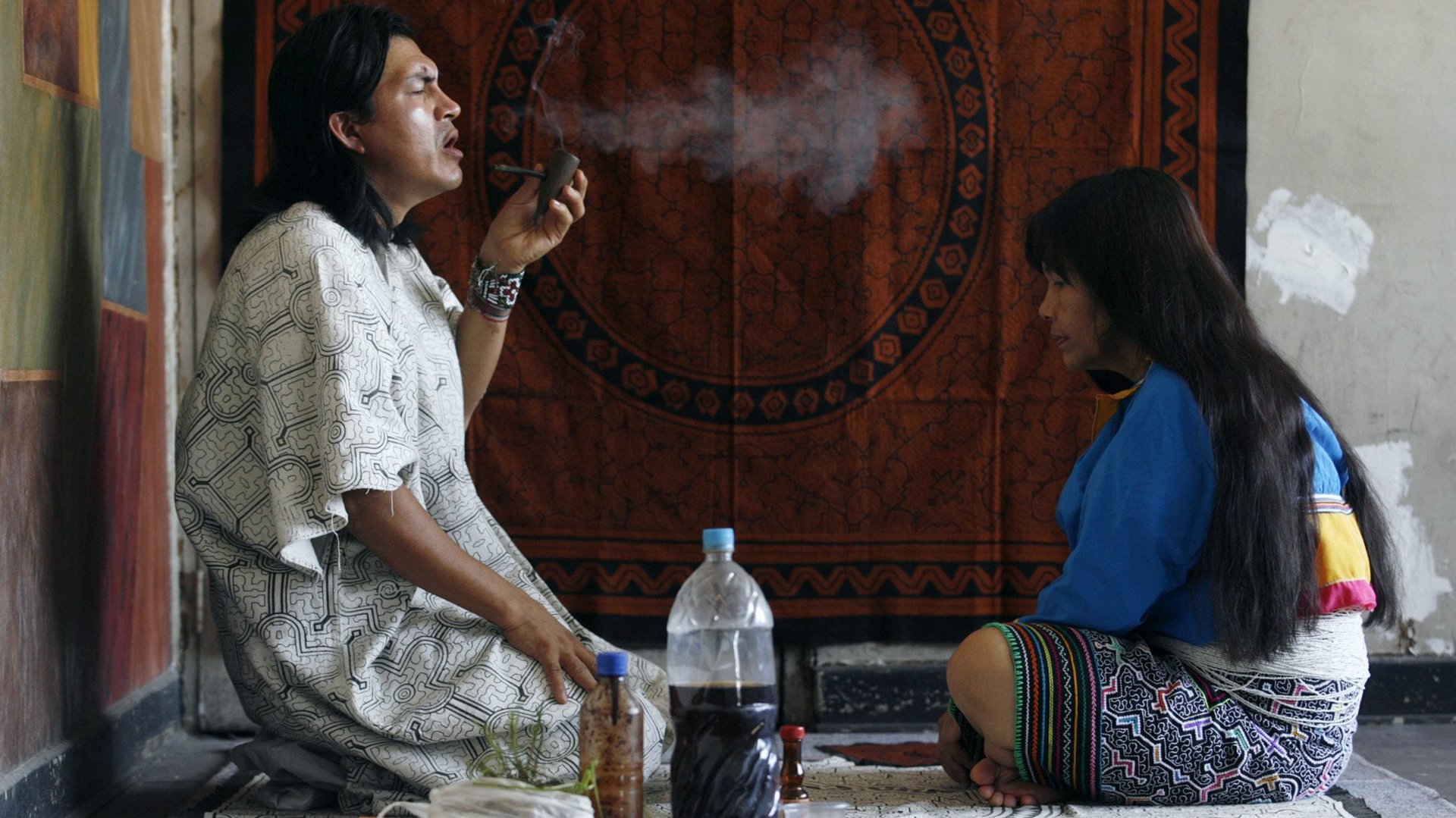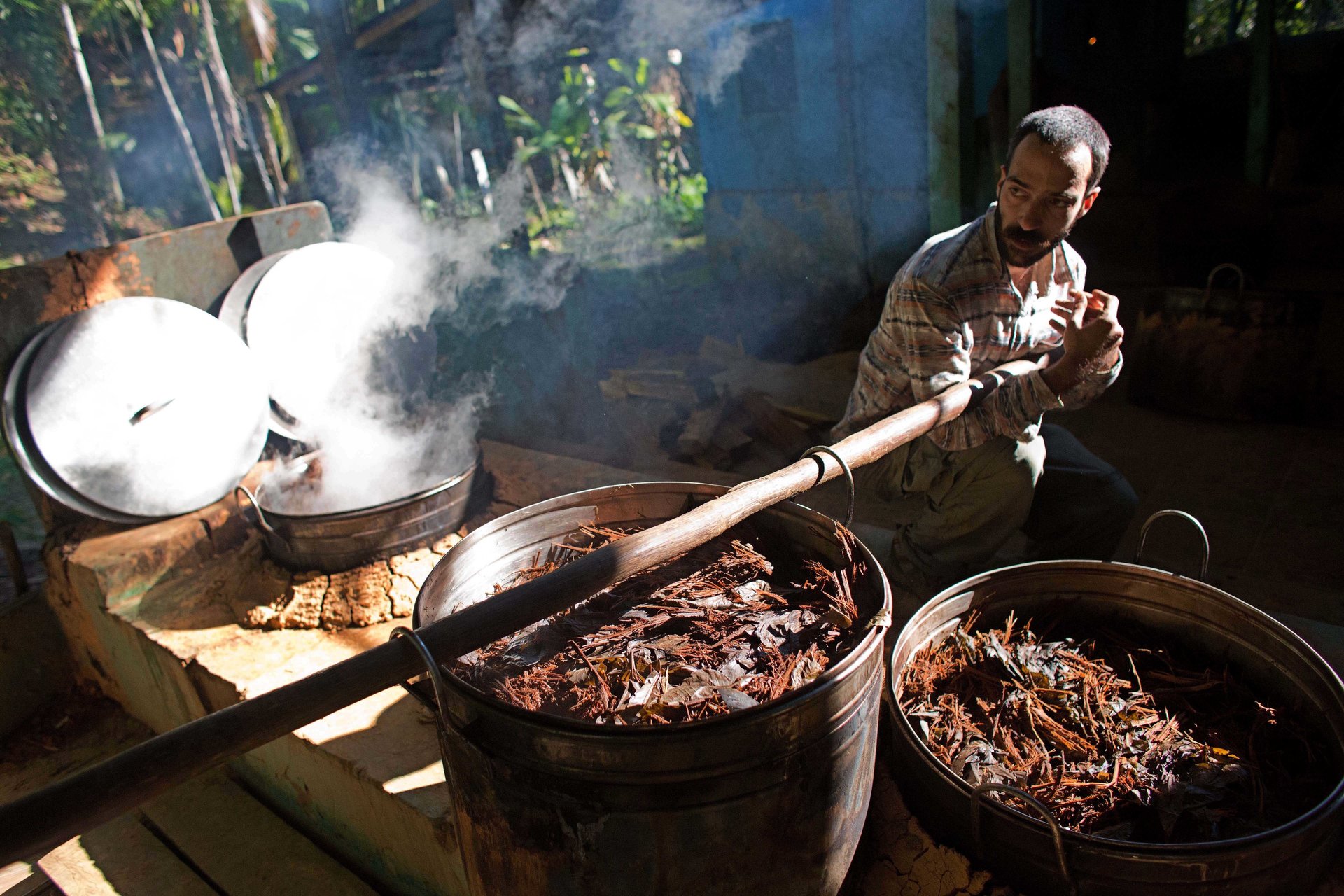The ayahuasca ceremony is going under the scientific-method microscope
Before neuroscientist Leanna Standish drank the hallucinogenic brew ayahuasca for the first time, she was a steadfast scientific materialist. She was trained to believe—and she did—that everything could be explained by science. Then, much like the pioneering psychedelic researchers who came before her, she had a humbling ayahuasca experience while spending time in Brazil in 2000.


Before neuroscientist Leanna Standish drank the hallucinogenic brew ayahuasca for the first time, she was a steadfast scientific materialist. She was trained to believe—and she did—that everything could be explained by science. Then, much like the pioneering psychedelic researchers who came before her, she had a humbling ayahuasca experience while spending time in Brazil in 2000.
“I became aware of a much larger reality than I had ever known,” Standish says. “It changed me forever.”
She returned to the US determined to study the therapeutic potential of this ancient medicine. More than 15 years later, she’s still trying. But it looks like in 2018 she may finally get started. The Federal Drug Administration approved her protocol for the first trial in the US investigating ayahuasca as a treatment for depression, and she’s stewarding a facility growing the necessary plants on the Big Island of Hawaii.
Standish, a professor at the Bastyr University Research Institute in Seattle, is one of several scientists hoping more governments around the world will begin approving research into the therapeutic potential of ayahuasca in the next year. Neuroscientist Jessica Nielson at the University of California-San Francisco plans to submit protocol this month to the FDA for a study on ayahuasca as a treatment for post-traumatic stress disorder. In the next three months, Jordi Riba, a researcher at the Sant Pau Institute of Biomedical Research in Barcelona, plans to seek approval from the Spanish government for his own study into ayahuasca as a PTSD treatment. If he succeeds, it will be the first trial in Europe looking at the brew’s therapeutic potential.
Their research is timely. Thousands of people from around the world travel to the Amazon every year to drink ayahuasca for mental health conditions including alcoholism, depression, anxiety, PTSD, eating disorders, and drug addiction. Shamans also illegally hold ceremonies in major cities across the US, Australia, Canada, and Europe.
The ayahuasca brew—traditionally made from the bark of a vine which grows in the Amazon called Banisteriopsis caapi and leaves of a shrub called Psychotria viridis—puts people in a state of deep introspection for about four hours. When they emerge, they often report newfound insights into their unhealthy behaviors. Yet, there’s limited empirical data backing the extraordinary stories about the therapeutic effects of this drug. Scientists, many of whom changed their research focus after their own astounding experiences on ayahuasca, are seeking to change that.
Draulio Barros de Araujo, a professor of neuroimaging at the Brain Institute in Brazil, has been at the forefront of this effort since one of his PhD students invited him to participate in a ceremony with the Santo Daime church in 2006. Over the last decade, Araujo has given ayahuasca to dozens of people with treatment-resistant depression. The studies are small, but rigorous and promising. In the largest, double-blind trial to date, which is soon to be published, 64% of participants reported significantly reduced symptoms of depression one week after a single dose of ayahuasca.
In the mid-2000s Jordi Riba, a researcher at the Sant Pau Institute of Biomedical Research in Barcelona, helped lead an observational study in which a small group of volunteers from Spain with severe drug addictions were sent to Brazil for a series of ayahuasca sessions. Ten years later, none have relapsed.
These are just a few examples from a body of small, open-label studies (i.e., not double-blinded) already conducted by scientists at various institutions around the world. But Araujo says he and his colleagues are well aware their research is “really just scratching the surface.”
“People of the Amazon thousands of years ago discovered the most complex pharmacology in the world by mixing two plants together,” says Standish. “And here we are, just now discovering it.”

Stepping on the shaman’s toes?
The cultural and religious history of ayahuasca presents unique research questions. From a biomedical perspective, ayahuasca is just a drug—as long as a researcher has access to it, they can study it. But traditionally, ayahuasca is seen in South America as a sentient plant which heals when administered in a ceremony by a shaman or religious leader who is playing sacred songs and performing a number of other rituals.
The ayahuasca researchers, many of whom have participated in ceremonies, respect these beliefs—and some think there is truth to them—but they’re also bound by the rules of scientific investigation. If there are too many variables in their clinical trials, they’ll be unable to produce consistent results or determine what aspect of the treatment was effective.
“In the Shipibo system of healing, the shamans are highly trained physicians. They’re doctors that have spent years and years learning how to practice medicine in a way that’s totally different from the way we practice medicine,” says Tanya Maté, a psychotherapist who has studied how the Shipibo people in Peru traditionally administer ayahuasca. Maté says there are many important aspects of the ceremony which cannot be accounted for in a clinical setting.
“If you talk to people who are working with this medicine in the traditional context, there are all these things involved that they really think help people navigate that experience including songs, blowing certain smokes,” Nielson says. “It doesn’t sound very scientific, but it’s something I’m struggling with because I want to be respectful of the culture, but I also want to be rigorous.”
Standish says she doesn’t consider these realms mutually exclusive, and is planning a trial that’s both scientific and sacred. She spent time with many different shamans in Peru and Brazil studying how to make the ayahuasca brew. She’s also planning to invite a shaman from the Amazon to Hawaii to bless the plants that will be used to make the medicine for her research. But the study itself will be set up much like the psychedelic drug research already taking place in the US such as the trials investigating psilocybin—the active ingredient in psychedelic mushrooms—as a treatment for anxiety in cancer patients and the trials looking at MDMA as a treatment for PTSD.
Participants will drink the ayahuasca in a private room with a therapist and a physician, and music playing. But rather than playing the sacred songs which are said to influence the effects of the ayahuasca, the researchers are considering using the same recorded music that is used in the psilocybin trials at Johns Hopkins and New York universities. (These playlists, which typically include Hindu chants and classical music, have been carefully curated to help volunteers focus inward while they’re tripping.) The decision to use these songs, rather than the music traditionally played in ceremonies, is simply one more way Standish is looking to cut back on variables to determine what’s “necessary and sufficient” for ayahuasca to be effective.
“There are so many fascinating questions about this that we must have a standardized, potent medicine that has been grown with sacred intention and meets all the criteria of science to even begin this kind of deep scientific inquiry,” she says.
Similarly, Nielson is designing her ayahuasca-for-PTSD trials so they include as much tradition as possible without threatening the credibility of her results. She and her colleagues have discussed setting up a clinic in Berkeley, California that has an outdoor area where volunteers can sit if they want to feel more connected to nature during the trial, something that was important to Nielson when she took ayahuasca in the Amazon. She says she knows they can’t make it like the rainforest, but she hopes it will be ceremonial with “Western precautions in place.”
They also would like to have a shaman from the Amazon in the room during the trial in case the volunteer has a spiritual crisis that the psychotherapists feel goes beyond their expertise. That could be scientifically problematic, however, as a shaman might sing or perform other rituals which change the ayahuasca outcomes as opposed to the psychotherapists who remain silently in the room unless called upon for brief reassurance.
Then, there’s the debate about how much and what kind of ayahuasca should be used. In some trials, for example, researchers have administered an ayahuasca pill which significantly decreases the chances that a volunteer will vomit. But traditionally, vomiting—called “purging” in ayahuasca communities—is considered an important component of the medicine. It’s understood as a way of physically ridding the body of trauma and other emotional baggage. Standish says from a biomedical perspective this could be explained as a healthy, gastrointestinal cleansing while Riba says he’s unconvinced of its value.
Riba also says that while he appreciates the work shamans and other religious communities are doing, he doesn’t believe that ritual is necessary for ayahuasca to work. “I don’t think a single group has a whole truth as to how ayahuasca should be administered,” he says.
Bia Labate, a cultural anthropologist who has worked on 17 books related to shamanism and drug policy, has made it her mission to encourage conversations between the people who have traditionally taken ayahuasca and the scientists investigating it. She’s not opposed to clinical trials, but says there will be people in the global ayahuasca community who are. It’s important, Labate emphasizes, that scientists proceed with cultural sensitivity and that they don’t use their research to delegitimize other forms of knowledge.
“I’m just worried that indigenous people and religious people who use ayahuasca as a sacred medicine will feel that somehow we are abusing it,” says Standish. “We are trying to proceed with the greatest of respect.”